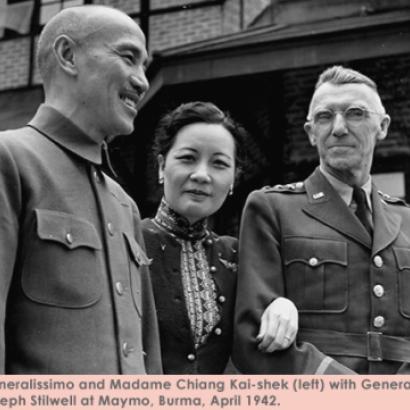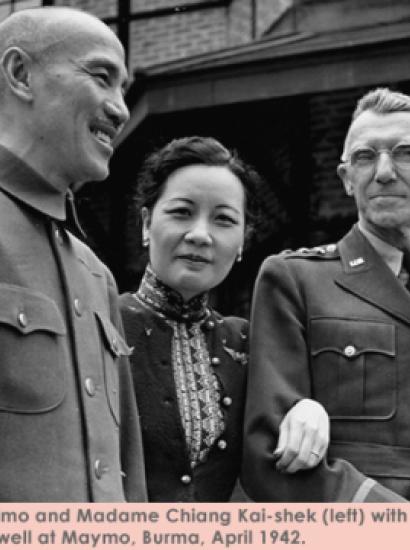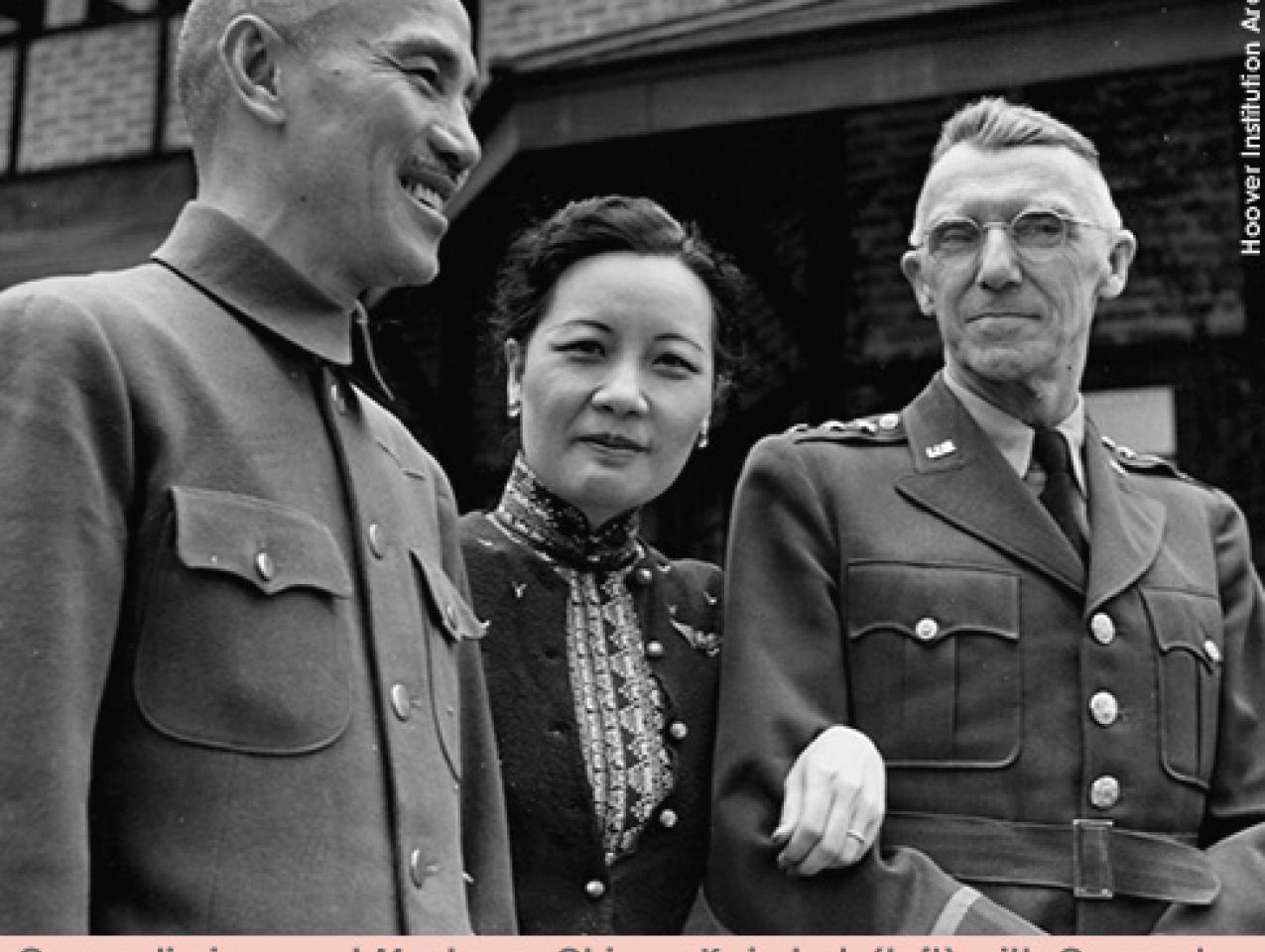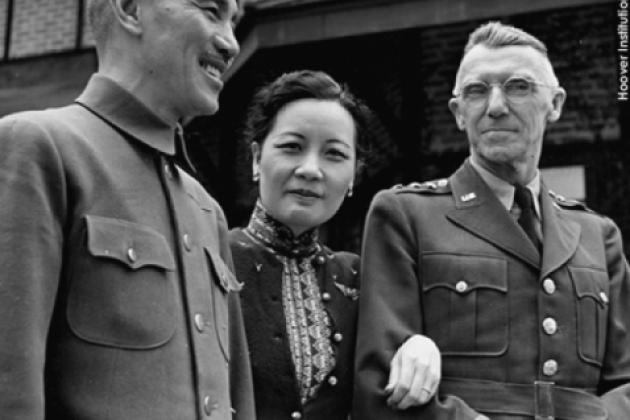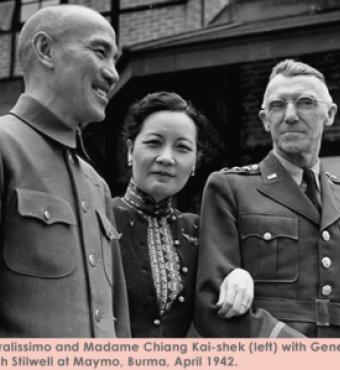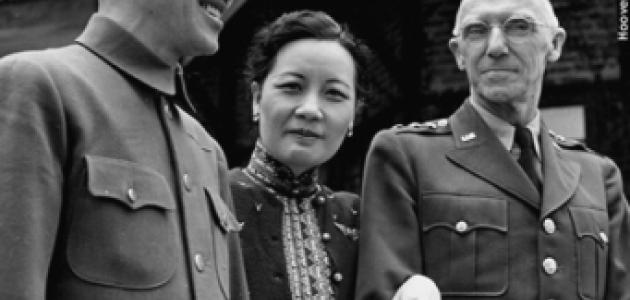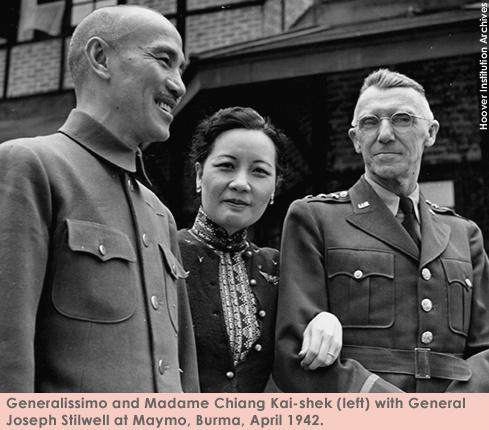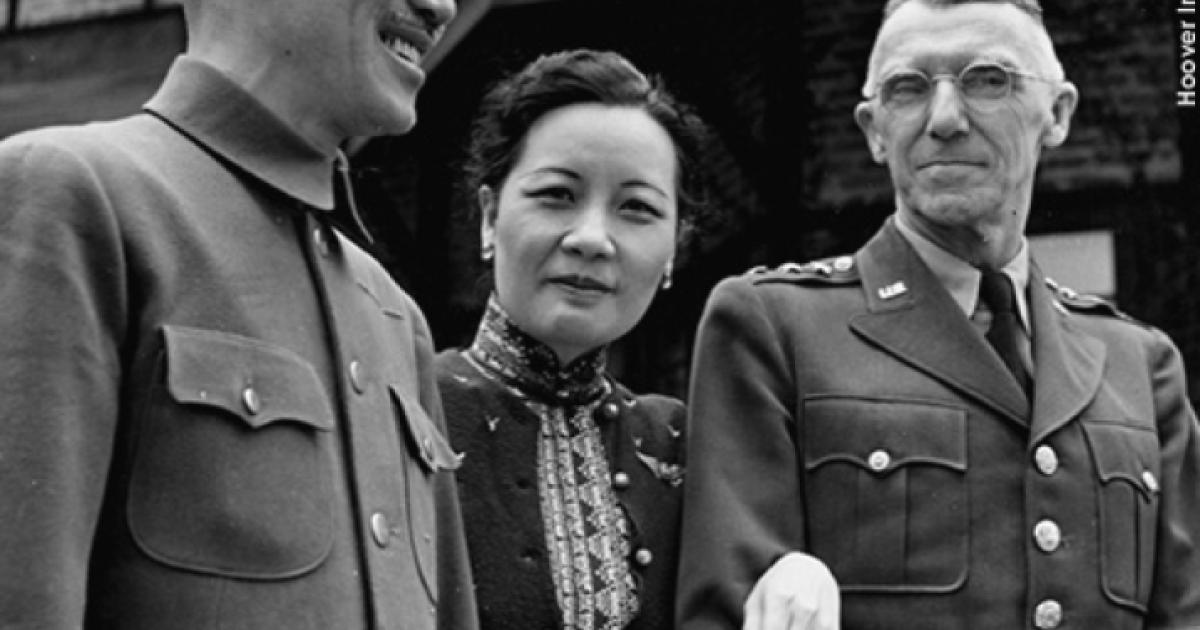World War II was a defining moment in Sino-American relations. For the first time in modern history, the United States joined with a non-Western country to defeat an Asian power: the empire of Japan. Barbara Tuchman’s Pulitzer Prize–winning history, Stilwell and the American Experience in China, brilliantly highlighted the troubled alliance between these two nations by describing the bitter relationship between America’s representative, General Joseph W. Stilwell, and Nationalist China’s leader, Generalissimo Chiang Kai-shek. According to Tuchman, their relationship was first amicable, then strained after Japanese troops occupied most of Burma in mid-1942, and finally collapsed in late 1944 when President Franklin D. Roosevelt ordered that Stilwell be replaced.
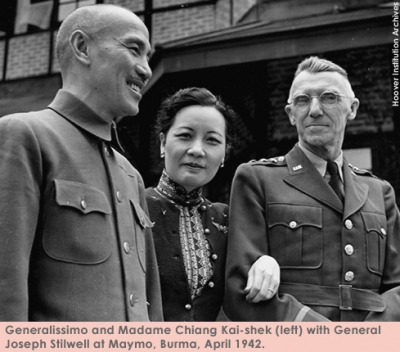
Newly available personal papers of T. V. Soong in the Hoover Institution Archives reveal a Chinese perception that was never mentioned by Tuchman. Soong was Chiang’s personal representative to President Roosevelt (1940–42) and minister of foreign affairs residing in Washington, D.C. (1942–45). As Chiang’s most trusted adviser, Soong was one of the most powerful and influential officials in the Nationalist government. These archival documents shed new light on the troubled Sino-U.S. wartime alliance by suggesting that Chiang and Soong began seriously discussing whether to replace Stilwell as early as mid-1942, following the Allied defeat in Burma.
The New Allied Command Structure in Asia
The Chiang-Stilwell problem first surfaced in January 1942, when the Allies agreed on a unified command structure in the Asia mainland theater of operations. British General Sir Archibald Wavell would serve as Supreme Allied Commander, but Chiang Kai-shek would serve as commander of all land and air forces “which are now or may in the future be operating in the China theatre.” Adding further confusion, the United States would send a representative to China to act as Chiang’s chief of staff and serve as liaison between Chinese, British, American, and other allied troops. That representative would also speak for the United States on any international war council in China, and he would control and maintain the Burma Road—the crucial supply route into China.
But the Allies never explored with Chiang how Nationalist China might cooperate with the United States to obtain American support to strengthen its weak military forces. (Chiang was given some assurances about forthcoming U.S. aid and plans for auxiliary bases to support the Chinese war effort.)
U.S. Secretary of War Henry L. Stimson informed Chiang that the United States wanted General Joseph Stilwell to be the American representative in China, making it clear that Stilwell would also control all U.S. military aid to China. Although in theory Stilwell would serve under Chiang, Stilwell would command all U.S. forces in China and such Chinese troops as might be assigned to him. Although all Allied troops in the theater were under the overall command of Wavell, in practice the reality of American military might made Stilwell the most powerful member of the Allied chain of command.
The Chinese leaders were worried about the Allied command structure because the new U.S. military representative held enormous power, especially over U.S. lend-lease aid. Chiang and Soong were not confident that Stilwell was friendly to the Nationalist government or the best person to assist China.
The Nationalist regime was also in trouble. Its best military units had suffered defeats at Shanghai, Canton, and Wuhan and had lost control of the prosperous coastal provinces. After relocating in the southwest provinces of Sichuan, Yunnan, and Guizhou, the Nationalist regime was too weak to rebuild its military forces to attack the thinly spread Japanese forces in China. Neither did the Nationalist government have the means to jump-start its economy and absorb large numbers of refugees from other parts of China. Thus inflation was worsening, official and civil morale was in decline, and military and government discipline and loyalty were eroding.
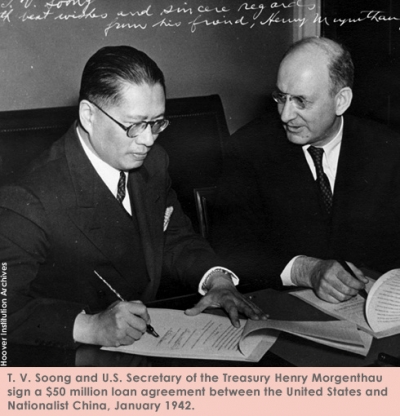
Cracks in the Relationship
The Nationalist government’s problems were not a high priority for Stilwell, who viewed the Nationalists with increasing wariness. Stilwell’s priority was to stop the Japanese military advance in Burma. When he first visited Chiang in Chongqing in March 1942, Stilwell focused on the defense of Burma and tried to persuade four of Chiang’s leading generals to agree to his plan for its defense. Stilwell also pressed Chiang for more military troops. Chiang finally consented, but he undoubtedly worried that any significant loss of his troops would weaken his coalition of Nationalist military forces.
Chiang granted Stilwell’s request for two divisions to assist in the defense of upper Burma, but Stilwell ignored Chiang’s plea not to sacrifice his best divisions during the Allied retreat from Burma. By mid-April 1942 Japanese forces had overrun Burma, inflicting a massive blow on Chiang’s already weak military forces. More important, China was now isolated from the rest of the world except for a trickle of military and economic aid supplied by the United States and airlifted over the highest mountains in the world.
Relations between Stilwell and Chiang worsened after the Allied defeat in Burma. Stilwell berated Chiang for his failure to “appoint a real commander, give him real authority, and hold him responsible for results” and complained of poor Chinese military leadership. Demanding that Chiang reform his military forces, Stilwell referred to one Nationalist general as “a second-rate man” and warned Chiang that if he continued to entrust large forces to such a general, “the effort will be wasted” and “will give China a black eye in America and Britain.”
Chiang and Soong were not sure what to do about the brash, arrogant American, though agreeing that cooperation with Stilwell was difficult because of his unfriendly, hostile behavior. On June 12, 1942, Soong sent a telegram to Chiang seeking his thoughts as to whether Stilwell should be replaced:
I cannot but perhaps offend you once again by asking your Excellency to inform me clearly what your true attitude toward Stilwell is. Have you discussed with him the points that I raised in my previous telegram to you? It is the U.S. Government’s general perception that no military aid to China will become possible unless Stilwell requests that aid, and he is complying with your demands. Thus, I must be aware of your true feelings about Stilwell and vice versa, so that I can be in a position to watch carefully for any opportunity to manage all related matters in the United States.
On June 16 Soong again informed Chiang that, according to his political networks in Washington, he had learned that “Stilwell will be in control of all aid for Nationalist China, but he must be responsive to Chiang’s wishes.” Soong also said he had talked with Secretary of War Stimson, who had expressed great confidence in Stilwell but said that Stilwell could be replaced if Chiang was not happy with him. Stimson was willing to discuss this problem with other U.S. officials. Soong emphasized that “the highest officials from President Roosevelt to lower ranked officials have all agreed that Stilwell should submit to your authority” and that Chiang should “feel free to treat him as your subordinate.” Finally, Soong urged Chiang to “use Stilwell’s personal relationships to persuade the U.S. War Department to give us more support.”
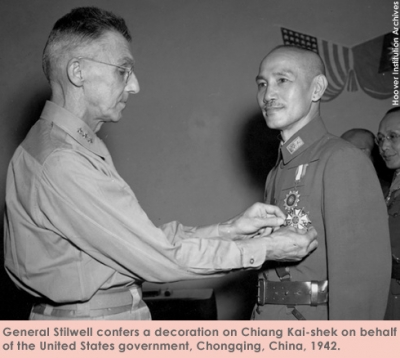
Impasse
By late 1942, Chiang was still hesitant to ask Roosevelt to replace Stilwell. Meanwhile, Stilwell criticized Chiang and his commanders for sending their best troops to the northwest provinces to contain communist military expansion instead of fighting the Japanese. He repeatedly asked that Chiang supply more young men for the Chinese Expeditionary Army (CEA) being trained to liberate Burma.
But the issue that brought Stilwell and Chiang’s relationship to an impasse was Stilwell’s lobbying U.S. officials to block Chiang’s efforts to expand General Claire Lee Chennault’s air force to fight the Japanese. In late 1942 Chiang had agreed with Chennault that greater airpower could disrupt Japanese supply routes and depots in Burma and protect the CEA’s advance into upper Burma. But Stilwell criticized this strategy, arguing that “Chiang Kai-shek’s army was not able to safeguard the airports [in China].”
In early 1943 Stilwell was supplying Chiang with more U.S. lend-lease aid in exchange for more Chinese troops to help liberate Burma. Meanwhile, Stilwell kept demanding that Chiang replace his incompetent generals. Chiang, however, did not share Stilwell’s enthusiasm for liberating only upper Burma; he wanted the Japanese driven out of Burma entirely so that more military and economic aid could flow into China. Chiang also wanted more U.S. airpower to help his Chinese ground troops counterattack the Japanese in eastern China. Meanwhile, Chiang—worried about Stilwell’s military strategy for recovering Burma—conceded to President Roosevelt that an advance into Burma, even if limited to upper Burma, “would be a major blow” to the Japanese but also expressed his hope that all of Burma could be recovered by combined land and sea operations. Even if the British could not muster naval support, Chiang told Roosevelt, it would be better to “wait a few months longer, or even until the monsoon season ends next autumn before launching a large offensive.” Chiang worried that “another failure in Burma would be a disaster for China so grave that the results cannot be predicted.”
Disagreements between Chiang and Stilwell reached a climax in late spring of 1943 over the use of American airpower and the appropriate strategy for recovering Burma. In a meeting held in Washington, D.C., on May 17, Soong assured American and British officials that Chiang’s plan to recover Burma was superior to General Stilwell’s strategy of fighting a limited war in upper Burma. Soong also stressed that Chiang had made friends with German General Hans von Seeckt and the Russian Generals Vasilii Chuikov and V. K. Blyukher, who had served as military advisers to Chiang. Soong concluded that if something was wrong between Chiang and Stilwell, “the mistake is obviously not on our side.”
Meanwhile, Stilwell responded to Chiang and Soong’s demand for more airpower by asking Chiang to invite Communist forces to join with Nationalist troops to fight the Japanese, a proposal that further infuriated Chiang.
As tension between Chiang and Stilwell increased, Soong continued to lobby for American support of Chiang’s strategic thinking. In June 1943 the U.S. War Department reported to President Roosevelt on the ambiguities of Stilwell’s position in the Allied command structure vis-à-vis Chiang. In the report, the War Department suggested that Stilwell’s position in China should be clarified and a determination made as to whether Stilwell should be replaced by another American official.
In the fall of 1943, Roosevelt agreed to recall Stilwell. In a confidential dispatch to Chiang on September 29, Soong mentioned meeting with Roosevelt and reported that he had reached several agreements with the U.S. government, including Stilwell’s removal. On a trip to Chongqing in October 1943, Soong told Chiang the “good news” and urged Chiang to telegram President Roosevelt. But Chiang then decided to retain Stilwell, as long as he maintained the current level of lend-lease aid. Soong felt embarrassed and betrayed, and a fierce quarrel erupted between the two men. Chiang became so infuriated that he slammed his fist on the table and sent dishes clattering to the ground. Soong, also angry, slammed the door and fled Chiang’s residence.
But the crisis continued. Between July and October 1944 Stilwell repeatedly informed General Marshall of Chiang’s intransigence about cooperating with the Communists in the fight against Japan. Marshall finally sought President Roosevelt’s approval to ask Chiang to give Stilwell the authority to control Chiang’s military forces. On learning this, Chiang finally asked Roosevelt to recall Stilwell.
The Path Not Taken
Chiang Kai-shek, in the summer of 1942 and fall of 1943, could have asked President Roosevelt to replace Stilwell and appoint an official who was friendly to the Nationalist government and willing to work with it. But he twice changed his mind and decided to cooperate with Stilwell as best he could. Relations between Chiang and Stilwell, as well as Sino-American relations generally, continued to deteriorate. Nationalist military leaders became further divided, and their military forces became weaker.
A different American military officer, friendly and disposed to coordinating American airpower with Chinese military ground troops, might have enabled Chiang to wage war more successfully in China proper. Chiang had hoped that even before Burma was liberated from Japanese forces, greater American airpower, more American aid, and better-equipped Chinese ground troops might have taken the war to the coastal provinces controlled by Japan’s imperial troops. Chennault and Chiang advocated this strategy, but Marshall and Stilwell opposed it, preferring to train Allied and Chinese troops to first liberate upper and then lower Burma.
Despite Soong’s repeated advice to Chiang to replace America’s top military adviser to China, Chiang continued to defer to General Stilwell. In so doing, Chiang became dependent on Stilwell dispensing U.S. aid and rejected Soong’s advice. The Nationalists might have missed an historic opportunity. Would modern Chinese history have been different if Chiang had chosen the other path?








